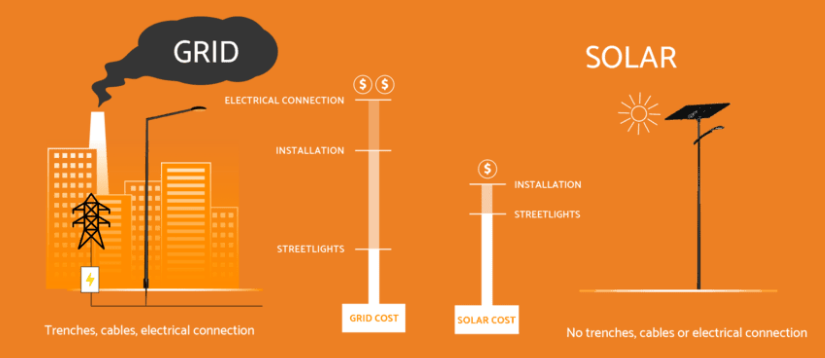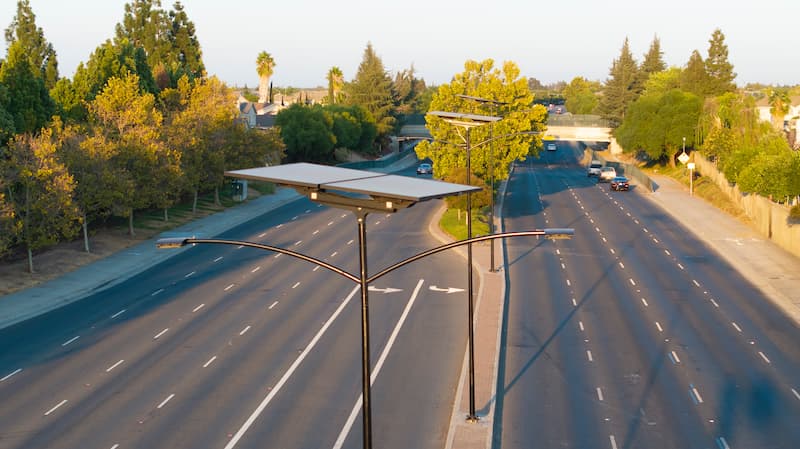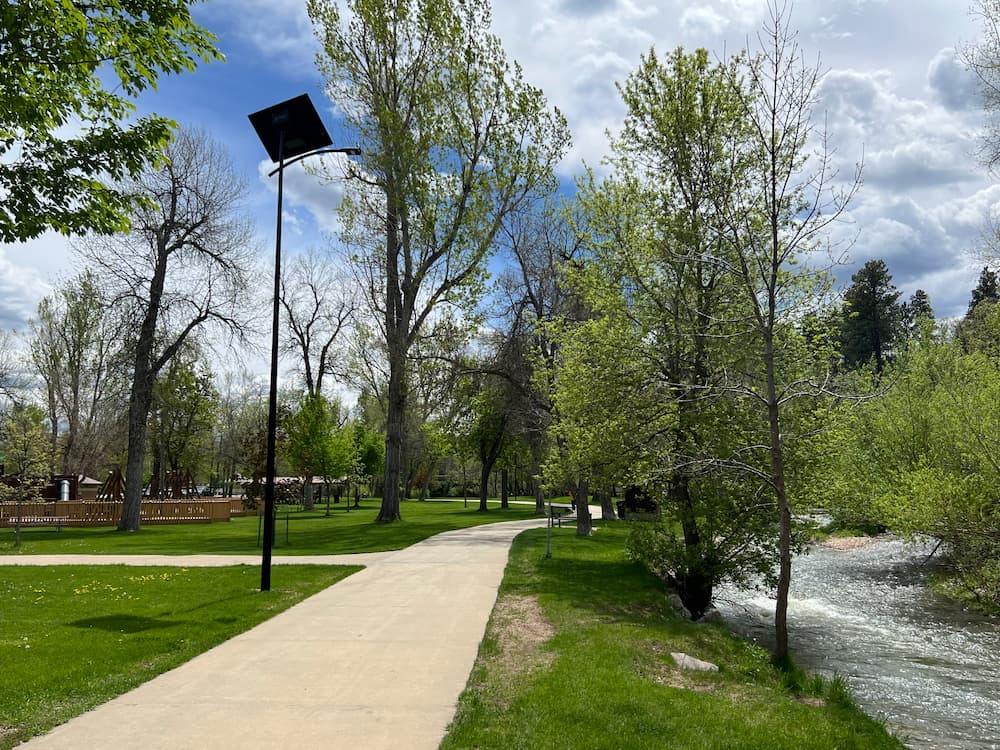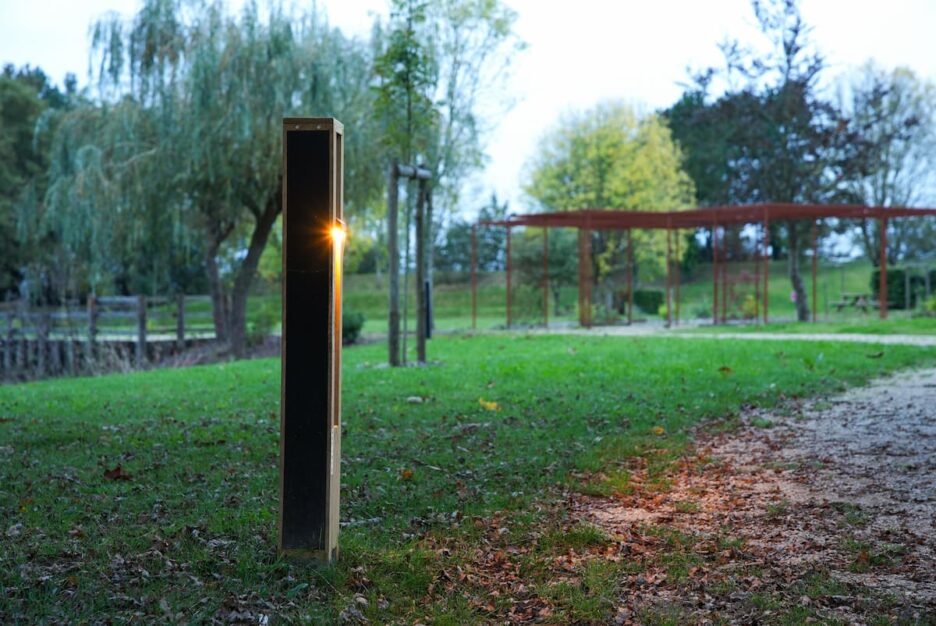The Key Differences Between Renewable and Nonrenewable Energy
As the global focus shifts toward sustainability, understanding the differences between renewable and nonrenewable energy becomes critical. These energy types power everything from our homes to businesses, and choosing the right source can have profound economic, environmental, and practical implications. At Fonroche Lighting America, we harness renewable energy to offer innovative solar lighting solutions that contribute to a greener future. In this article, we explore the fundamental differences between renewable and nonrenewable energy, their real-world applications, and why renewable energy is the path forward.
What Are Renewable and Nonrenewable Energy Sources?
Renewable Energy Defined
Renewable energy is derived from naturally replenished resources like sunlight, wind, water, and geothermal heat. These energy sources are virtually limitless and environmentally friendly, making them key to combating climate change. Solar power, for example, captures the sun’s energy to produce electricity, which is the foundation of Fonroche’s advanced solar lighting systems. By reducing reliance on finite resources, renewable energy represents a sustainable pathway for powering urban and rural communities alike.
Nonrenewable Energy Defined
Nonrenewable energy comes from finite resources such as coal, oil, natural gas, and uranium. These resources take millions of years to form and will eventually deplete. While nonrenewable energy has been the dominant source for decades, its environmental impact and limited availability are driving the shift toward renewables. The extraction and consumption of nonrenewable resources also lead to significant ecological degradation, making the transition to renewables an urgent priority.
Key Differences Between Renewable and Nonrenewable Energy
| Factor | Renewable Energy | Nonrenewable Energy |
|---|---|---|
| Resource Availability | Unlimited and replenishable | Finite and depletable |
| Environmental Impact | Minimal (clean energy, no emissions) | Significant (pollution, greenhouse gases) |
| Cost Dynamics | Higher upfront, lower operational, neutral or improved project costs | Lower upfront, volatile long-term |
| Reliability | Weather-dependent, improving | Stable until resources are exhausted |
1. Resource Availability
- Renewable: Unlimited natural sources like sunlight, wind, and water ensure ongoing energy supply. These resources can be harnessed anywhere their conditions are present, allowing for global scalability.
- Nonrenewable: Limited resources such as oil, coal, and natural gas will eventually run out, leading to rising costs and scarcity. Dependency on these resources also creates vulnerabilities in supply chains and geopolitical stability.
2. Environmental Impact
- Renewable: Clean energy sources reduce carbon footprints and promote environmental health. By minimizing greenhouse gas emissions, renewable energy contributes to combating climate change and preserving biodiversity.
- Nonrenewable: Extraction and usage contribute to habitat destruction, pollution, and climate change. These activities leave long-lasting scars on ecosystems, often causing irreparable damage.

3. Cost Dynamics
- Renewable: Although initial setup costs can be higher, long-term operational costs are significantly lower, with decreasing technology costs. The economic incentives provided by governments further reduce barriers to adoption.
- Nonrenewable: Lower initial costs but prone to price volatility due to resource scarcity and geopolitical factors. Over time, operational costs can escalate, burdening consumers and industries alike.
4. Reliability
- Renewable: Advancements in energy storage, like Fonroche’s high-performance batteries, address weather and supply challenges. With IoT-enabled systems, renewables are becoming more dependable and efficient.
- Nonrenewable: Reliable until resources are depleted, but supply chains and geopolitical tensions can disrupt availability. Additionally, nonrenewables are vulnerable to market fluctuations and environmental regulations.
Examples of Renewable and Nonrenewable Energy Sources
Renewable Energy Sources
- Solar Power: Captures sunlight to generate electricity, exemplified by Fonroche’s solar lighting systems.
- Wind Energy: Converts kinetic energy from wind into power.
- Hydropower: Utilizes water flow for electricity generation.
- Geothermal Energy: Harvests heat from beneath the Earth’s surface.
- Biomass: Converts organic material into energy, offering a sustainable alternative to fossil fuels.

Nonrenewable Energy Sources
- Coal: A major source of electricity but highly polluting.
- Oil: Widely used but environmentally and geopolitically challenging.
- Natural Gas: Cleaner than coal but still a finite resource.
- Nuclear Energy: High output but dependent on limited uranium supplies, with waste management challenges.
Why Renewable Energy is the Future
Global Trends Toward Renewables
Governments and organizations worldwide are prioritizing renewable energy to meet climate goals. Investments in solar, wind, and other renewables are accelerating, driven by decreasing costs and increasing awareness of environmental benefits. From urban centers to remote areas, renewable energy projects are setting new benchmarks for sustainability and innovation.
Technological Innovations
Advancements in solar technology and energy storage have transformed renewable energy from an alternative to a necessity. Fonroche’s innovative solutions include:
- Advanced Battery Storage: Reliable energy even in adverse weather conditions, ensuring consistent performance.
- IoT-Enabled Systems: Real-time monitoring and energy optimization for efficiency, enabling smarter resource management.
- Flexible Designs: Solar lighting systems adaptable for streets, pathways, parks, and remote locations, providing tailored solutions for diverse needs.
Economic and Environmental Benefits
1. Cost Savings
Renewable energy systems reduce operational costs by eliminating energy bills and minimizing maintenance expenses. Over time, the cost of renewables continues to decline, making them an increasingly accessible option for municipalities, businesses, and individuals.
2. Environmental Impact
Switching to renewables reduces greenhouse gas emissions, improves air quality, and supports biodiversity. By adopting sustainable energy, communities can actively combat climate change and protect natural ecosystems.
3. Job Creation
The renewable energy sector supports global job growth, with solar and wind industries leading the charge in new employment opportunities. From manufacturing to installation, renewable energy projects create sustainable livelihoods.
Applications of Renewable Energy
Municipal Infrastructure
Solar-powered streetlights offer sustainable lighting for roads, parks, and public spaces. By reducing dependency on the grid, municipalities can save on costs while improving public safety.

Commercial Developments
Eco-friendly lighting enhances sustainability profiles and attracts environmentally conscious tenants. Renewable energy systems also contribute to achieving green building certifications, adding value to commercial properties.
Remote Locations
Renewable systems provide reliable energy in areas with limited grid access, improving quality of life and accessibility. These systems are ideal for rural communities and off-grid installations.
Debunking Common Myths About Renewable Energy
At Fonroche Lighting America, we lead the renewable energy industry with advanced solar street light solutions that set the standard for reliability and performance. As the USA’s premier provider of solar lighting, our commitment to quality and innovation ensures we deliver sustainable, cost-effective solutions for municipalities, businesses, and communities nationwide. Despite the clear advantages of renewable energy, misconceptions persist—often rooted in outdated or unreliable technology used by competitors. Let’s address these myths and highlight how Fonroche’s cutting-edge technology dispels them.
Myth 1: Renewable Energy is Unreliable
Fact: Many competitors in the renewable energy market have perpetuated this myth due to their reliance on outdated technology and subpar battery systems. Unlike these providers, Fonroche Lighting America uses top-of-the-line resources, including advanced battery storage and IoT-enabled monitoring, to ensure consistent and reliable energy supply. Our systems operate flawlessly even in adverse weather conditions, debunking the notion that renewables can’t perform under challenging circumstances.
Myth 2: Renewable Energy is Too Expensive
Fact: The perception of high costs often stems from competitors offering inefficient solutions with limited scalability. Fonroche’s solar lighting systems are engineered for long-term savings, featuring cutting-edge technology that lowers operational costs and maximizes energy efficiency. Combined with government incentives, the investment in renewable energy through Fonroche becomes both cost-effective and future-proof.
Myth 3: Renewables Can’t Meet Global Demand
Fact: This myth arises from the limitations of poorly designed systems that fail to scale effectively. Fonroche Lighting America addresses these challenges head-on by integrating innovative technologies that expand capacity and ensure consistent energy delivery. From urban centers to remote areas, our solutions demonstrate how renewables can not only meet but exceed global energy needs, paving the way for widespread adoption and sustainable growth.
Policy Influence and Future Outlook
National and international policies are driving the adoption of renewable energy. In the U.S., initiatives like tax credits and infrastructure investments support the transition to clean energy. Fonroche Lighting aligns with these policies, delivering sustainable solutions that meet regulatory requirements and community goals. By staying ahead of regulatory changes, Fonroche helps clients achieve compliance while advancing their sustainability objectives.
Take Action for a Brighter Future
Understanding the differences between renewable and nonrenewable energy is the first step toward a greener future. At Fonroche Lighting America, we’re not just lighting up streets—we’re lighting the path to sustainability. Our solar lighting systems combine advanced technology with eco-conscious design, offering reliable, cost-effective solutions for cities, businesses, and communities.

